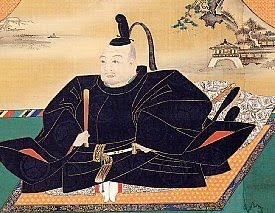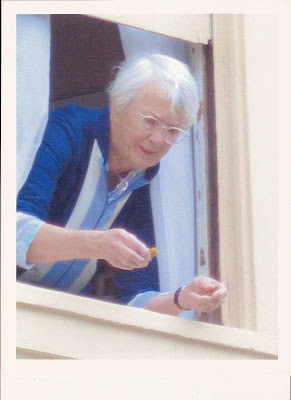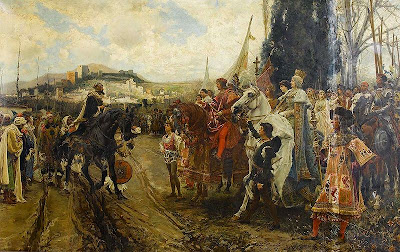
1506 – The first contingent of 150 Swiss Guards arrives at the Vatican.
Swiss Guards is the name given to the Swiss soldiers who have served as bodyguards, ceremonial guards, and palace guards at foreign European courts since the late 15th century. In contemporary usage it refers to the Pontifical Swiss Guard of Vatican City. They have generally had a high reputation for discipline and loyalty to their employers. Apart from household and guard units, some formations have also served as fighting troops; regular Swiss mercenary regiments served as line troops in various armies, notably those of France, Spain and Naples up to the 19th century.
Various units of Swiss Guards have existed for hundreds of years. The earliest such detachment was the Swiss Hundred Guard (Cent-Garde) at the French court (1497 – 1830). This small force was complemented in 1567 by a Swiss Guard regiment. The Papal Swiss Guard in the Vatican was founded in 1506 and is the only Swiss Guard that still exists. In the 18th century several other Swiss Guards existed for periods in various European courts.
The Corps of the Pontifical Swiss Guard or Swiss Guard (German: Schweizergarde, Italian: Guardia Svizzera Pontificia, Latin: Pontificia Cohors Helvetica, or Cohors Pedestris Helvetiorum a Sacra Custodia Pontificis) is something of an exception to the Swiss rulings of 1874 and 1927. It is a small force maintained by the Holy See and is responsible for the safety of the Pope, including the security of the Apostolic Palace. It serves as the de facto military of Vatican City.
History
The history of the Swiss Guards has its origins in the 15th century. Pope Sixtus IV (1471-1484) already made a previous alliance with the Swiss Confederation and built barracks in Via Pellegrino after foreseeing the possibility of recruiting Swiss mercenaries. The pact was renewed by Innocent VIII (1484-1492) in order to use them against the Duke of Milan. Alexander VI (1492-1503) later actually used the Swiss mercenaries during their alliance with the King of France. During the time of the Borgias, however, the Italian Wars began in which the Swiss mercenaries were a fixture in the front lines among the warring factions, sometimes for France and sometimes for the Holy See or the Holy Roman Empire. The mercenaries enlisted when they heard King Charles VIII of France was going to raise a war against Naples.
Among the participants in the war against Naples was Cardinal Giuliano della Rovere, the future Pope Julius II (1503-1513), who was well acquainted with the Swiss having been Bishop of Lausanne years earlier. The expedition failed in part thanks to new alliances made by Alexander VI against the French. When Cardinal della Rovere became pope Julius II in 1505, he asked the Swiss Diet to provide him with a constant corps of 200 Swiss mercenaries. In September 1505, the first contingent of 150 soldiers started their march towards Rome, under the command of Kaspar von Silenen, and entered the city on January 22, 1506, today given as the official date of the Guard's foundation. "The Swiss see the sad situation of the Church of God, Mother of Christianity, and realize how grave and dangerous it is that any tyrant, avid for wealth, can assault with impunity, the common Mother of Christianity," declared Huldrych Zwingli, a Swiss Catholic who later became a Protestant reformer. Pope Julius II later granted them the title "Defenders of the Church's freedom".
The force has varied greatly in size over the years and has even been disbanded. Its first, and most significant, hostile engagement was on May 6, 1527 when 147 of the 189 Guards, including their commander, died fighting the unruly troops of Holy Roman Emperor Charles V during the Sack of Rome in order to allow Clement VII to escape through the Passetto di Borgo, escorted by the other 40 guards. The last stand battlefield is located on the left side of St Peter's Basilica, close to the Campo Santo Teutonico (German Graveyard)
The Swiss Guard has served the popes since the 1500s. Ceremonially, they shared duties in the Papal household with the Palatine Guard and Noble Guard, both of which were disbanded in 1970 under Paul VI. Today the Papal Swiss Guard have taken over the ceremonial roles of the former units. At the end of 2005, there were 134 members of the Swiss Guard. This number consisted of a Commandant (bearing the rank of oberst or Colonel), a chaplain, three officers, one sergeant major (feldwebel), 30 NCOs, and 99 halberdiers, the rank equivalent to private (so called because of their traditional Halberd).
The official dress uniform is of blue, red, orange and yellow with a distinctly Renaissance appearance. Commandant Jules Repond (1910-1921) created the current uniforms in 1914. While a painting of the Swiss Guard bearing Pope Julius II on a litter (by Raphael) is often cited as inspiration for the Swiss Guard uniform, the actual uniforms worn by those soldiers are of the style which appears by today's standards as a large skirt, a common style in uniforms during the Renaissance. A lot of people are under the impression that the uniforms were designed by Michelangelo. But the official Vatican City Holy See website recently said "It is commonly thought that the uniform was designed by Michelangelo, but it would seem rather that he had nothing to do with it.
However, Raffaello(Raphael) certainly did influence its development, as he indeed influenced fashion in general in Italy in the Renaissance, through his painting". This seems to suggest that the uniforms were designed by Raphael and not Michelangelo. A very clear expression of the modern Swiss Guard uniform can be seen in a 1577 fresco by Jacob Coppi of the Empress Eudoxia conversing with Pope Sixtus III It is clearly the precursor of today's recognizable three-colored uniform with boot covers, white gloves, a high or ruff collar, and either a black beret or a black Comb morion (silver for high occasions). Sergeants wear a black top with crimson leggings, while other officers wear an all-crimson uniform.
The regular duty uniform is more functional, consisting of a simpler solid blue version of the more colorful tri-color grand gala uniform, worn with a simple brown belt, a flat white collar and a black beret. For new recruits and rifle practice, a simple light blue overall with a brown belt may be worn. During cold or inclement weather, a dark blue cape is worn over the regular uniform. The original colors (blue and yellow) were issued by Pope Julius II taking his family (Della Rovere) colors. Pope Leo X added the red to reflect his family's Medici colors.
Headwear is typically a black beret for daily duties, while a black or silver morion helmet with red, white, yellow and black, and purple ostrich feather is worn for ceremonial duties, the former for guard duty or drill; the latter for high ceremonial occasions such as the annual swearing in ceremony or reception of foreign heads of state.
The tailors of the uniforms work inside the Swiss Guard barracks. The uniform weighs 8 pounds (4 kg), and may be the heaviest uniform in use by any standing army today. The Renaissance style makes them one of the most complicated to construct. A single uniform requires 154 pieces and takes nearly 32 hours and 3 fittings to complete.
Image & text:wikipedia.com










.jpg)






